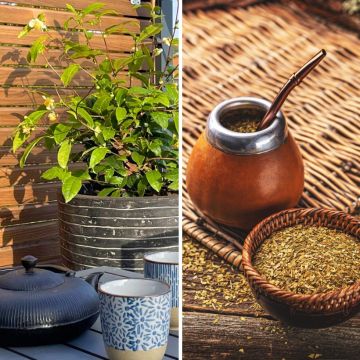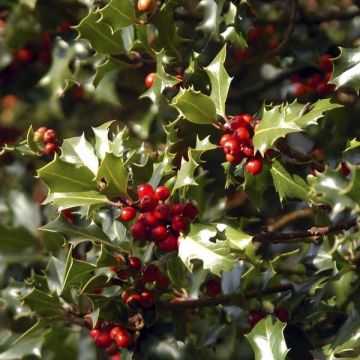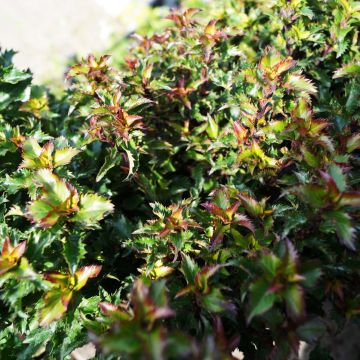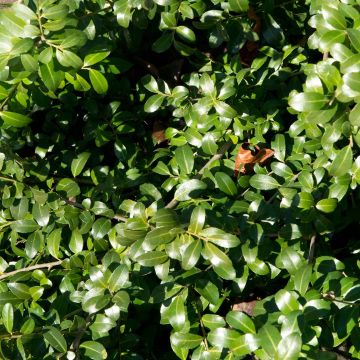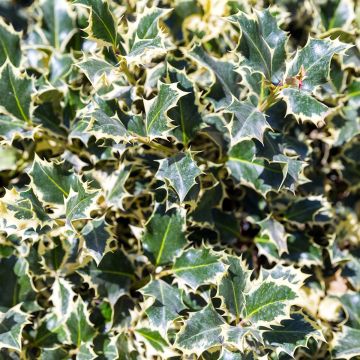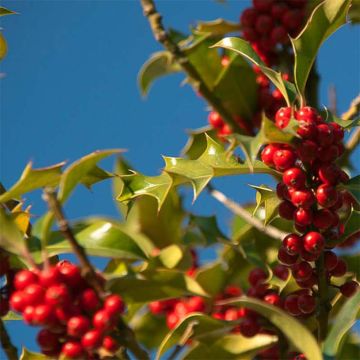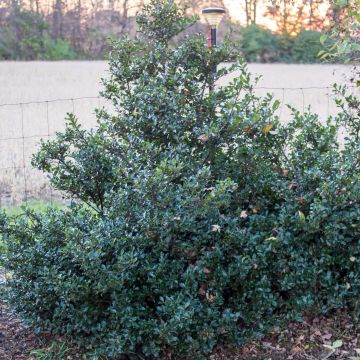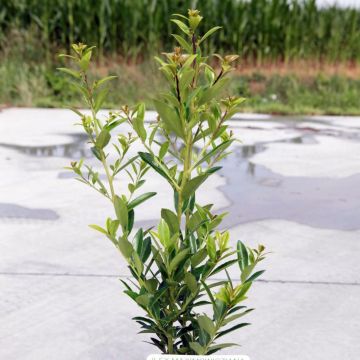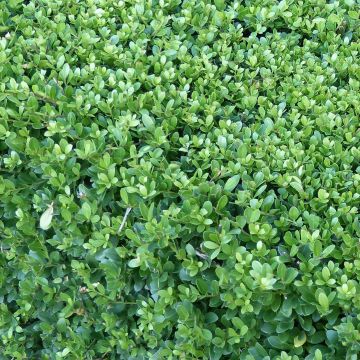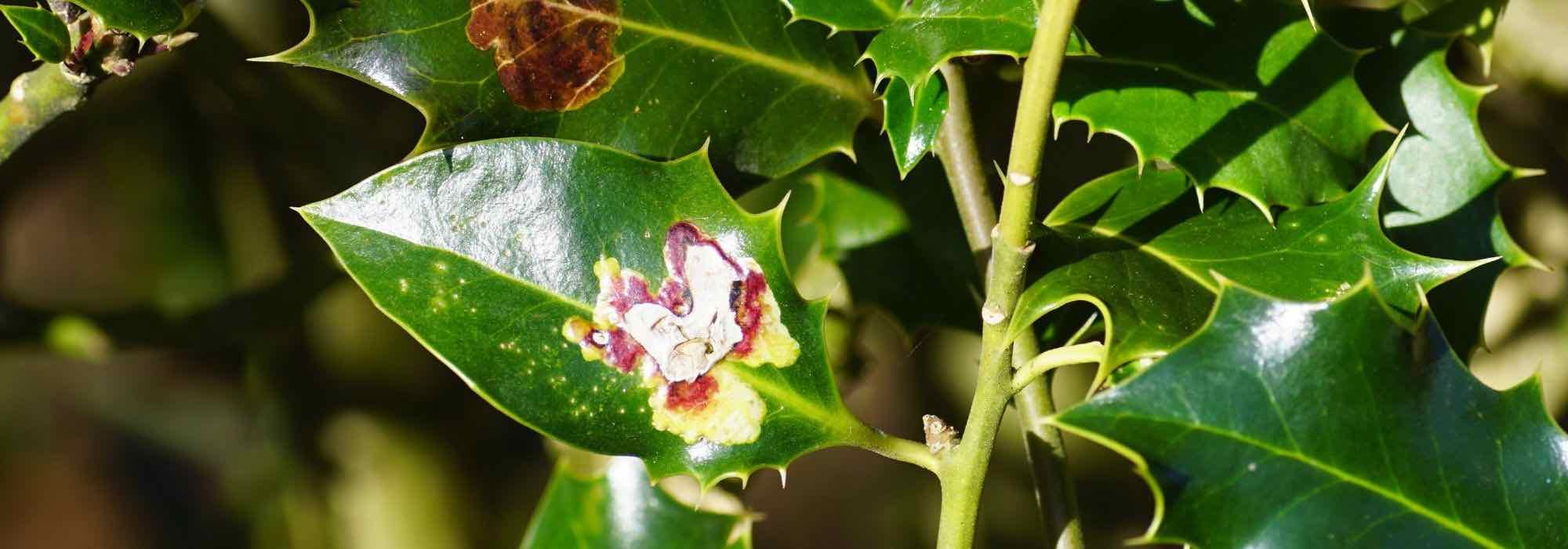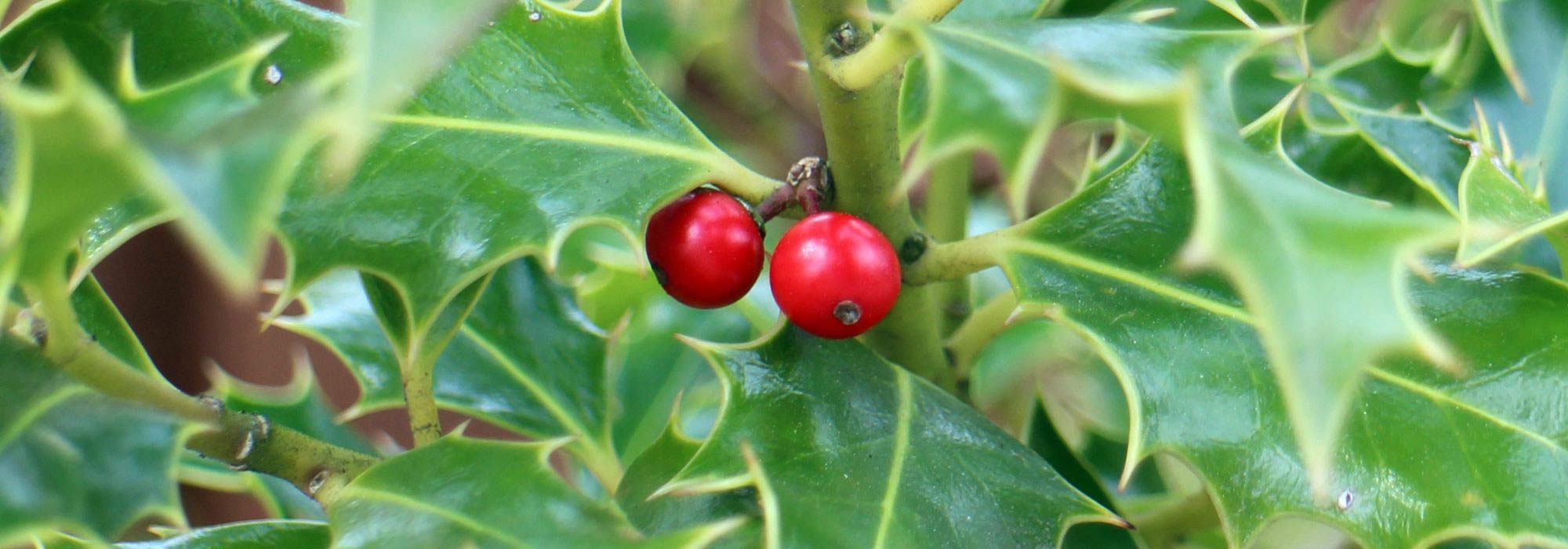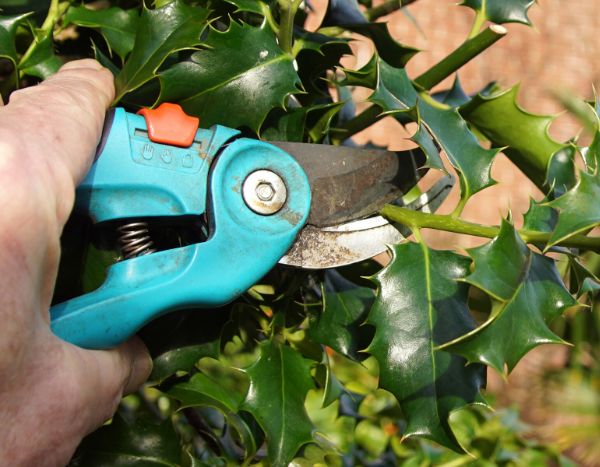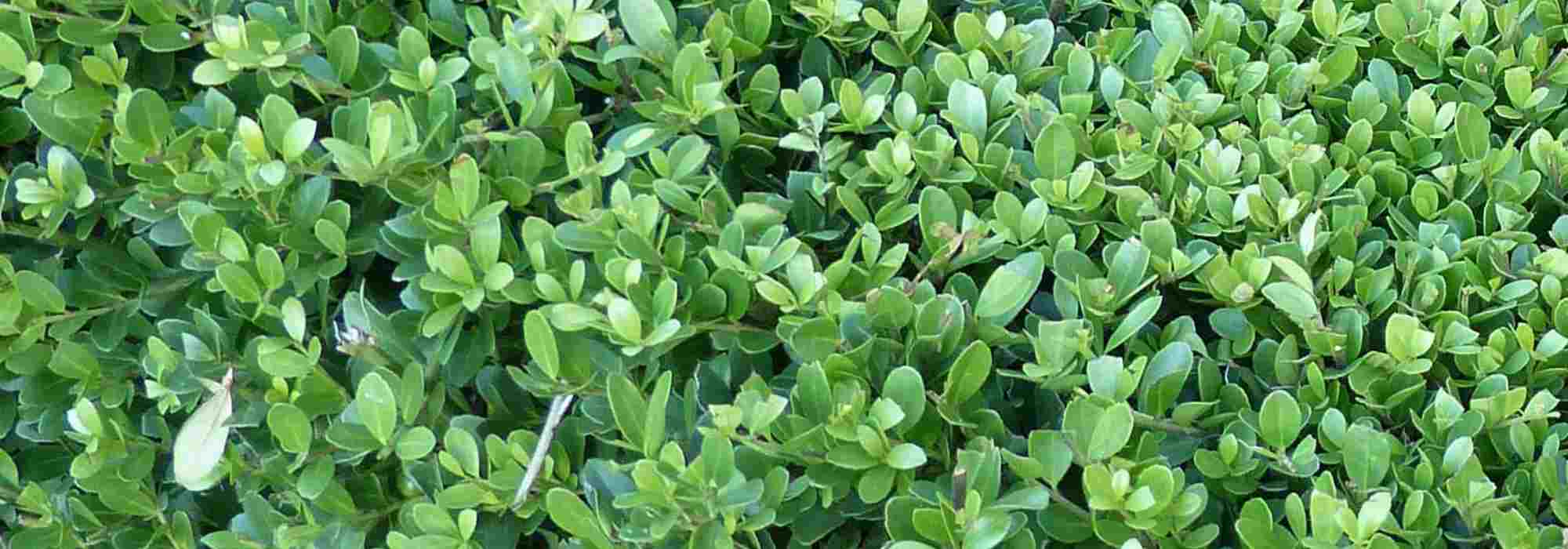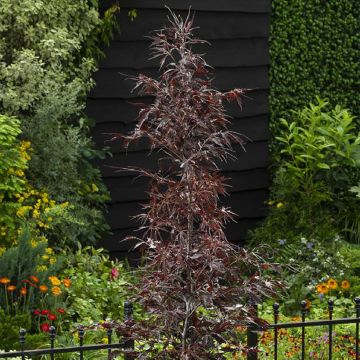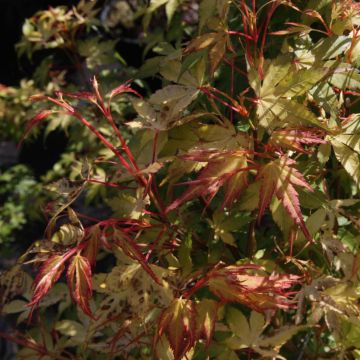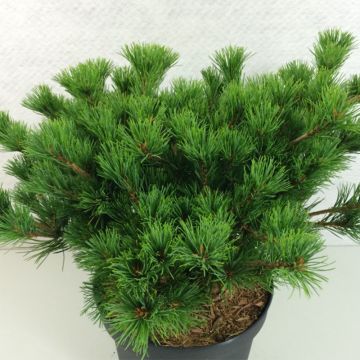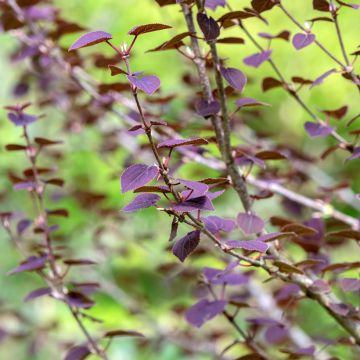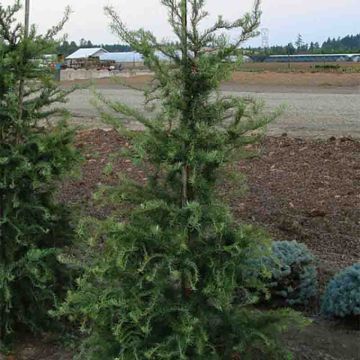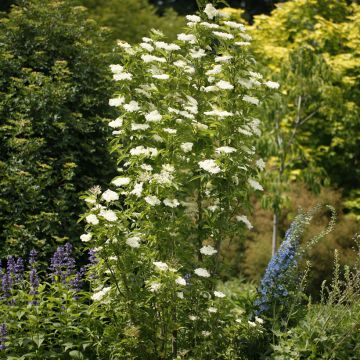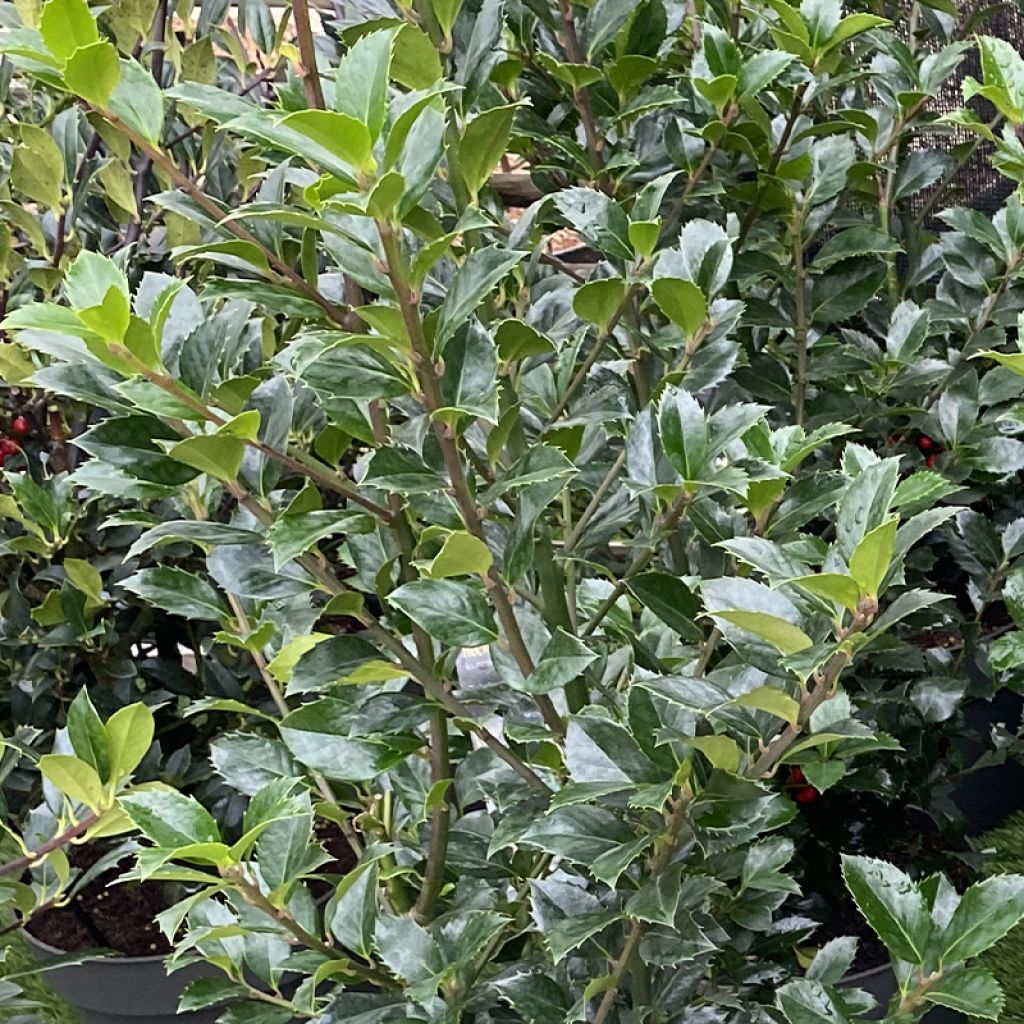

Ilex x meserveae Heckenpracht - Blue Holly
Ilex x meserveae Heckenpracht - Blue Holly
Ilex x meserveae Heckenpracht
Blue Holly, Meserve Holly
Special offer!
Receive a €20 voucher for any order over €90 (excluding delivery costs, credit notes, and plastic-free options)!
1- Add your favorite plants to your cart.
2- Once you have reached €90, confirm your order (you can even choose the delivery date!).
3- As soon as your order is shipped, you will receive an email containing your voucher code, valid for 3 months (90 days).
Your voucher is unique and can only be used once, for any order with a minimum value of €20, excluding delivery costs.
Can be combined with other current offers, non-divisible and non-refundable.
Home or relay delivery (depending on size and destination)
Schedule delivery date,
and select date in basket
This plant carries a 24 months recovery warranty
More information
We guarantee the quality of our plants for a full growing cycle, and will replace at our expense any plant that fails to recover under normal climatic and planting conditions.
Would this plant suit my garden?
Set up your Plantfit profile →
Description
Ilex x meservae 'Heckenpracht' is a variety of Meserve Holly with dark green foliage and a pyramidal habit. It grows relatively slowly and eventually forms a bush that is 2.50 to 3 m (8 ft 2 in to 9 ft 10 in) tall. It is useful for creating low-maintenance hedges that require very little pruning. This plant thrives in acidic to neutral soils and cannot tolerate limestone. It prefers a good level of soil moisture and does not tolerate drought. Once these conditions are met, it is a low-maintenance bush that can grow well in both full sun and partial shade. Very hardy, its limited growth is well-suited for small gardens. This male variety does not produce berries, but it pollinates female clones, especially 'Heckenfee'.
The genus Ilex is the only member of the Aquifoliaceae family, but it includes several hundred species. Ilex x meservae is a hybrid obtained in the United States (Long Island, New York) in the 1950s by Kathleen Meserve, by crossing Ilex aquifolium and Ilex rugosa. Ilex aquifolium is our common holly that can be found in forests up to 1500 m (4921 ft 4 in) altitude. Ilex rugosa is a small bush with narrow leaves that are quite different from the former. Native to Japan and Sakhalin Island, it grows in full sun or partial shade and can withstand temperatures as low as -40°C! It has a spreading or prostrate habit, typically not exceeding 60 cm (23.6 in) in height.
Ilex x meservae 'Heckenpracht' is the result of a cross between Ilex aquifolium 'Pyramidalis', which gives it its habit, and Ilex x meservae 'Blue Prince'. Meserve Hollies are commonly referred to as the 'Blue Holly' among English gardeners. However, green is the dominant colour in this holly, so other bushes should be considered if a truly blue appearance is desired! Its new spiny leaves are edged with bronze before turning dark green, and its distinctly pyramidal shape makes it highly decorative. It produces white flowers in spring, but no decorative berries.
The key to success with this bush is to find a location that meets its soil requirements. It has specific soil preferences and does not transplant well, so it is best to choose the right spot from the start.
This 'Heckenpracht' Meserve Holly' is an excellent hedging plant that requires minimal maintenance (Heckenpracht translates to 'hedge' and 'splendor' in German...). It does not require pruning, except perhaps for controlling its width and preventing the hedge from becoming too thick. It is also great for mass planting, especially in contemporary gardens where its architectural form complements modern architectural shapes. It can create contemporary scenes when paired with topiary or architectural conifers, with the forms and foliage colours replacing the need for flowers. The Pinus strobus Minuta, with its cushion-like flattened habit and slow growth, pairs perfectly with this holly, as does the small Photinia Little Red Robin with its rounded habit and red young shoots. In partially shaded areas, the Salix integra Hakuro Nishiki or Dappled Willow is also a good companion with its variegated green, white, and pink foliage, which adds vibrancy to our holly's foliage.
Ilex x meserveae Heckenpracht - Blue Holly in pictures
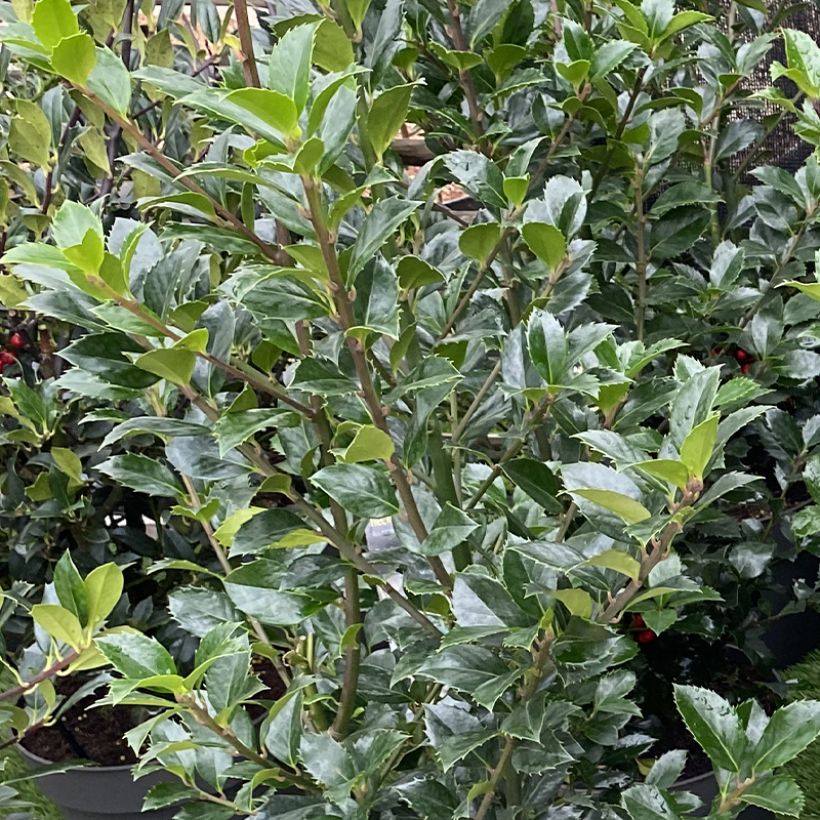

Plant habit
Flowering
Foliage
Botanical data
Ilex
x meserveae
Heckenpracht
Aquifoliaceae
Blue Holly, Meserve Holly
Cultivar or hybrid
Other Ilex - Holly
View all →Planting and care
This holly can be planted in full sun or partial shade, but especially in non-calcareous and well-drained soil. A humus-rich neutral soil will suit it well, as will an acidic soil. It doesn't like being too dry and will grow better in moist or even wet soil. Soak the root ball in a bucket for 20 minutes before planting to ensure it is well saturated. In the meantime, dig a hole 50 or 60 cm (19.7 or 23.6 in) wide and deep, and add around thirty litres of compost mixed with the existing soil. Water, position the root ball so that the surface of the compost is at the same level as the ground, fill the hole around the root ball and water again.
This shrub is planted in spring or autumn, taking care to choose its final location, as it does not tolerate transplanting. Water every summer and during hot periods, and add some compost on the surface once a year in spring to maintain a certain level of soil moisture and enrich it with organic matter.
Planting period
Intended location
Care
Planting & care advice
This item has not been reviewed yet - be the first to leave a review about it.
Similar products
Haven't found what you were looking for?
Hardiness is the lowest winter temperature a plant can endure without suffering serious damage or even dying. However, hardiness is affected by location (a sheltered area, such as a patio), protection (winter cover) and soil type (hardiness is improved by well-drained soil).

Photo Sharing Terms & Conditions
In order to encourage gardeners to interact and share their experiences, Promesse de fleurs offers various media enabling content to be uploaded onto its Site - in particular via the ‘Photo sharing’ module.
The User agrees to refrain from:
- Posting any content that is illegal, prejudicial, insulting, racist, inciteful to hatred, revisionist, contrary to public decency, that infringes on privacy or on the privacy rights of third parties, in particular the publicity rights of persons and goods, intellectual property rights, or the right to privacy.
- Submitting content on behalf of a third party;
- Impersonate the identity of a third party and/or publish any personal information about a third party;
In general, the User undertakes to refrain from any unethical behaviour.
All Content (in particular text, comments, files, images, photos, videos, creative works, etc.), which may be subject to property or intellectual property rights, image or other private rights, shall remain the property of the User, subject to the limited rights granted by the terms of the licence granted by Promesse de fleurs as stated below. Users are at liberty to publish or not to publish such Content on the Site, notably via the ‘Photo Sharing’ facility, and accept that this Content shall be made public and freely accessible, notably on the Internet.
Users further acknowledge, undertake to have ,and guarantee that they hold all necessary rights and permissions to publish such material on the Site, in particular with regard to the legislation in force pertaining to any privacy, property, intellectual property, image, or contractual rights, or rights of any other nature. By publishing such Content on the Site, Users acknowledge accepting full liability as publishers of the Content within the meaning of the law, and grant Promesse de fleurs, free of charge, an inclusive, worldwide licence for the said Content for the entire duration of its publication, including all reproduction, representation, up/downloading, displaying, performing, transmission, and storage rights.
Users also grant permission for their name to be linked to the Content and accept that this link may not always be made available.
By engaging in posting material, Users consent to their Content becoming automatically accessible on the Internet, in particular on other sites and/or blogs and/or web pages of the Promesse de fleurs site, including in particular social pages and the Promesse de fleurs catalogue.
Users may secure the removal of entrusted content free of charge by issuing a simple request via our contact form.
The flowering period indicated on our website applies to countries and regions located in USDA zone 8 (France, the United Kingdom, Ireland, the Netherlands, etc.)
It will vary according to where you live:
- In zones 9 to 10 (Italy, Spain, Greece, etc.), flowering will occur about 2 to 4 weeks earlier.
- In zones 6 to 7 (Germany, Poland, Slovenia, and lower mountainous regions), flowering will be delayed by 2 to 3 weeks.
- In zone 5 (Central Europe, Scandinavia), blooming will be delayed by 3 to 5 weeks.
In temperate climates, pruning of spring-flowering shrubs (forsythia, spireas, etc.) should be done just after flowering.
Pruning of summer-flowering shrubs (Indian Lilac, Perovskia, etc.) can be done in winter or spring.
In cold regions as well as with frost-sensitive plants, avoid pruning too early when severe frosts may still occur.
The planting period indicated on our website applies to countries and regions located in USDA zone 8 (France, United Kingdom, Ireland, Netherlands).
It will vary according to where you live:
- In Mediterranean zones (Marseille, Madrid, Milan, etc.), autumn and winter are the best planting periods.
- In continental zones (Strasbourg, Munich, Vienna, etc.), delay planting by 2 to 3 weeks in spring and bring it forward by 2 to 4 weeks in autumn.
- In mountainous regions (the Alps, Pyrenees, Carpathians, etc.), it is best to plant in late spring (May-June) or late summer (August-September).
The harvesting period indicated on our website applies to countries and regions in USDA zone 8 (France, England, Ireland, the Netherlands).
In colder areas (Scandinavia, Poland, Austria...) fruit and vegetable harvests are likely to be delayed by 3-4 weeks.
In warmer areas (Italy, Spain, Greece, etc.), harvesting will probably take place earlier, depending on weather conditions.
The sowing periods indicated on our website apply to countries and regions within USDA Zone 8 (France, UK, Ireland, Netherlands).
In colder areas (Scandinavia, Poland, Austria...), delay any outdoor sowing by 3-4 weeks, or sow under glass.
In warmer climes (Italy, Spain, Greece, etc.), bring outdoor sowing forward by a few weeks.































